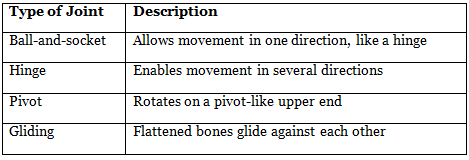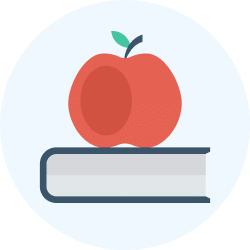Body Movements Class 6 Worksheet Science Chapter 5
Q1: Multiple Choice Questions (MCQs)
(i) What is the primary function of the human skeleton?
(a) To produce red blood cells
(b) To support and protect the body
(c) To facilitate digestion
(d) To generate body heat
(ii) Which type of joint allows movement in only one direction, similar to a door hinge?
(a) Ball-and-socket joint
(b) Hinge joint
(c) Pivot joint
(d) Gliding joint
(iii) What is the primary function of the rib cage in the human body?
(a) To aid in digestion
(b) To protect the heart and lungs
(c) To support the legs
(d) To produce red blood cells
(iv) Which animals have an exoskeleton, an external hard skeleton on the outside of their bodies?
(a) Fish
(b) Birds
(c) Insects
(d) Mammals
(v) How do fish primarily propel themselves forward in water?
(a) By flapping their fins
(b) By spinning in circles
(c) By crawling on the ocean floor
(d) By jumping out of the water
Q2: Fill in the Blanks
(i) Animals like corals, sea cucumbers, and sponges, which do not move, live in a fixed place but can move their body parts, are called _______________.
(ii) The human skeleton consists of a framework of ___________ bones.
(iii) _____________ hold the bones together at movable joints in the human body.
(iv) Snakes move by sliding their bodies, and their under surface is covered with scales, which help them _______________ to the ground.
(v) The unique flying adaptation in birds is their _______________ that provide lift and balance.
Q3: Match the Column (In a Table)
Match the type of joint with its description.

Q4: True or False
(i) The vertebral column supports the chest.
(ii) The human skull consists of 22 bones, all of which are movable.
(iii) Snails use their slimy foot to move and protect themselves.
(iv) Bats are the only mammals that can fly.
(v) The human pelvic girdle forms the pelvic cavity, protecting the digestive organs.
You can access the solutions to this worksheet here.
|
5 videos|60 docs|10 tests
|
FAQs on Body Movements Class 6 Worksheet Science Chapter 5
| 1. What are body movements? |  |
| 2. What are the types of body movements? |  |
| 3. How do muscles help in body movements? |  |
| 4. Can body movements be voluntary and involuntary? |  |
| 5. How can body movements be improved? |  |















